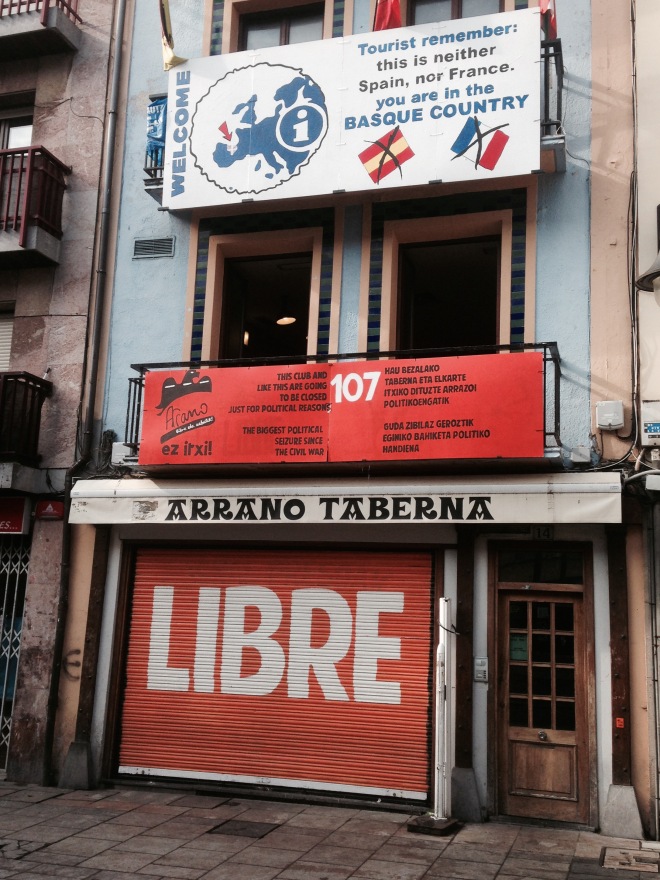Some of my favorite coastline in the Basque Country is between Bilbao and San Sebastian on the Cantabrian sea. Zarauz is a relaxing village that comes to life in the summer offering excellent food and one of the longest beaches along the Cantabrian sea. Last year we spent a few days in the nearby fishing town of Getaria and walked the 3 mile seaside walk to Zarauz a few times to enjoy the beach and to dine at Karlos Arguiñano, a restaurant owned by the famous television chef. The walk between the two towns is right along the Northern Route of the Camino de Santiago. We fell in love with the rhythm of Zarauz and decided to spend a few nights there in a hotel and returned again this summer with the van.
Last year we stayed in a hotel right in the main square and there was a protest going on about the attempt to close one of the local bars due to political reasons. In the Basque Country there are bars called “Herriko Tavernas” where members of the Basque Nationalist organization meet. They are also just regular bars with excellent pintxos. The Spanish Government is trying to close them down. The protest consisted of the signing a proposition, selling t-shirts and live music.
One of our favorite bars, also in the main square, has a great display of pintxos. Everyday at 10 a.m. and 5:00 p.m. the bar was quickly covered in various types of Tortilla (spanish omelette). Some are sliced in half and layered with different fillings like crab salad, ham and cheese or tuna salad with piquillo peppers. Others are prepared with potato and onion, chorizo and peppers, or any mixture of fresh vegetables. The choices are endless.
The classic Pinxto, which should be eaten in one big bit, is the “Gilda”. Named after Rita Hayworth as “Gilda”, this pintxo is spicy, salty and green! An olive, a spicy pickled pepper and a cured anchovy are what you get on this long toothpick. Whether you are in Zarauz or any other bar in the Basque Country you can always find a “Gilda” surrounded by many other plates of art that are prepared to touch all of our senses.







